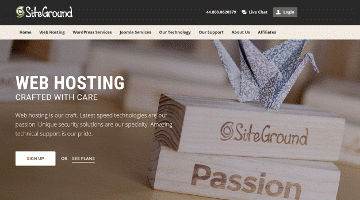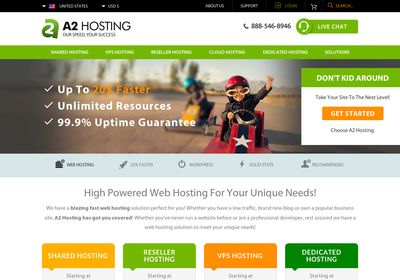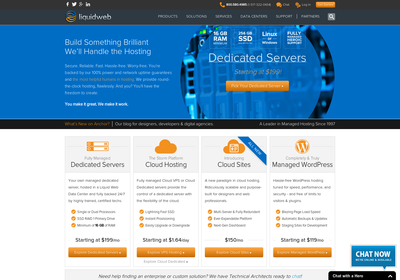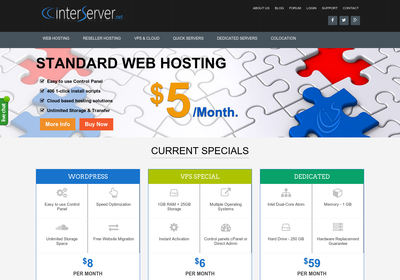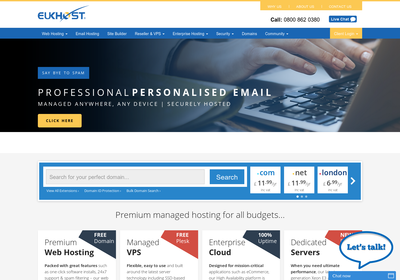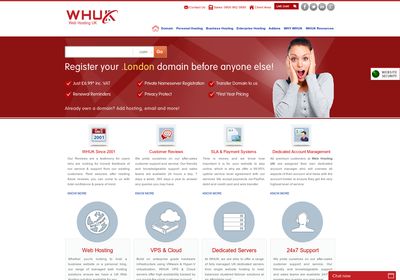Grails Hosting: Compare Hosting
Oops! No Hosting Plans Match Your Search
You’ve selected a combination of features that none of the web hosts we profile offer. We suggest you remove your last filter or reset & start again.
Ask Our Experts
Need help with your hosting? Tell us exactly what you are looking for and we’ll do our very best to help. Please allow one working day for a response.
Please fill in all fields.
Thanks! Your request has been sent. We’ll reply within 24 hours.
Recommended Host for Grails
 Prices in are approximate, based on current exchange rates. The host may charge you in USD.
Prices in are approximate, based on current exchange rates. The host may charge you in USD. Prices in are approximate, based on current exchange rates. The host may charge you in USD.
Prices in are approximate, based on current exchange rates. The host may charge you in USD. Prices in are approximate, based on current exchange rates. The host may charge you in USD.
Prices in are approximate, based on current exchange rates. The host may charge you in USD. Prices in are approximate, based on current exchange rates. The host may charge you in USD.
Prices in are approximate, based on current exchange rates. The host may charge you in USD. Prices in are approximate, based on current exchange rates. The host may charge you in USD.
Prices in are approximate, based on current exchange rates. The host may charge you in USD. Prices in are approximate, based on current exchange rates. The host may charge you in USD.
Prices in are approximate, based on current exchange rates. The host may charge you in USD. Prices in are approximate, based on current exchange rates. The host may charge you in USD.
Prices in are approximate, based on current exchange rates. The host may charge you in USD. Prices in are approximate, based on current exchange rates. The host may charge you in USD.
Prices in are approximate, based on current exchange rates. The host may charge you in USD. Prices in are approximate, based on current exchange rates. The host may charge you in USD.
Prices in are approximate, based on current exchange rates. The host may charge you in USD. Prices in are approximate, based on current exchange rates. The host may charge you in USD.
Prices in are approximate, based on current exchange rates. The host may charge you in USD.What is the Grails Framework?
Grails is a web application framework written in a programming language called Groovy – which is based on Java. The Grails platform has an “ecosystem” of powerful development and authoring tools, most of which are open source and well supported.
About Grails
Grails was founded in 2005, originally calling itself “Groovy on Rails” because of the remarkably similar architecture to the “Ruby on Rails” framework. Groovy comes from the Groovy Programming Language – which first appeared in 2003 as a novel scripting language on the Java Platform, with the code itself being dynamically compiled down to Java Virtual Machine bytecode.
Groovy follows some similarities with Ruby in terms of influence from Perl and Smalltalk. Like many emerging technology trends from the early 2000’s, the Model View Controller (MVC) pattern heavily influenced the overall structure of Grails. The platform was created as a way to allow “coding by convention” – a design paradigm which tries to focus on easy reusable code behaviors and configuration control.
In 2006, the name was changed to Grails, after David Heinemeir Hansson (founder of Ruby on Rails) asked for the name to be changed. Grails initially was maintained by a group called G2One – which was acquired by SpringSource and then VMware. However, in April 2015, Object Computing, Inc. announced that they would become the official sponsor of the Grails project, and they will committed to increasing the exposure of the platform.
As an open source project, anyone may contribute, but platforms generally succeed when they also have strong financial backing.
Features & Functionality
Taking full advantage of the Java platform, Grails accesses the functionality of Hibernate and Spring, in a single interface under a consistent framework. This allows Grails to be persistent, use dynamic tag libraries for components, and have fully extensible support for Ajax – allowing for live applications.
Beyond that, Grails is built in a way that distinguishes it from other Java frameworks – it does not require XML configuration and is ready for use without deeper setup. Cutting this reliance on XML for setting up page Controllers means that Grails is a “High Productivity” environment. less time is spent on setting up the development units, which in turn means that more time can be spent on site production. Grails thereby allows developers to setup quickly and get started right away.
Environment configuration can be extended though, by adding dynamic methods called “mixins” – which add additional Class features in a way that works as though it was compiled, but does not require a recompile. This allows for dynamic methods to flourish and are often used throughout a project. At a high level, the features of Grails can be summarized in a concise but powerful list:
- Flat Learning Curve – taking less time to setup and emphasizing “coding by convention” – the API for Groovy is an easy jump for Java developers
- Java Integration – deeply rooted support from the parent technology Java, Grails integrates with Jave Virtual Machines and Containers
- Powerful Tools – with strong application support for Object-Relational Mapping and NoSQL, structuring powerfully user-driven Views is easy
- Domain-Specific Languages – Grails is a language built for the web, and supports common web conventions like markup languages and modeling languages
- Plugin Extensibility – through the Grails Ecosystem and through custom means, additional framework layers can be added for rapid deployments
This combination of features means that Persistence is an emphasized aspect of the platform. The Domain Model which controls the data layer uses something called Grails Object Relatioanl Mapping (GORM) – allowing for “domain classes” which are saved and automatically made persistent across the project. Setting something as Domain Class will automatically add “Dynamic Instance Methods ” which make it really simple to setup relational data. For example, by declaring a “Book” Domain Class with encapsulated Title and Author data – it becomes very easy to Save new books, or to Delete, Count, or Find existing books. No data layer setup needed, everything is handled by Grails.
Why should I use Grails and what are the alternatives?
Grails is a long established platform with strong developer support and a trajectory for growth. It takes the best feature of Java and makes it simpler to create web applications. Other similar tools do exist, the most notable being JRuby, “Play” Framwork and the more recent Juzu framework.
Choosing the right platform should entail comparing the user stories for the intended project against the capabilities of each framework, and figuring out where the most overlap exists.
Installation and Hosting
Setting up Grails is fairly straightforward but depends on the operating system. Grails.org maintains a stable binaries on their Download page. The easiest way to handle Grails and keep it up to date is to use the Groovy enVironment Manager (GVM) – Windows users will need to use a parallel application called Posh-GVM – which uses PowerShell. With GVM installed, installing Grails can be done simply on the Bash terminal line.
Grails is supported by many common Interactive Development Editors (IDEs) and text editors, have syntax highlighting and auto-complete for Grails – including Intellij IDEA, Eclipse, Sublime Text, Textmate, and Notepad++. For everything beyond this point, the development of the website, the database configuration, and any further work is entirely up to the developer.
Grails.org has a good Learning center – and beyond that, many different starter templates exist officially or in open source projects around the web. Grails has a strong community, is well supported on StackOverflow, and hosts many different events around the year.
What web hosts are best setup for supporting a Grails project?
Grails.org recommends hosting with Secure Shell (SSH) and FTP (SFTP) access for security reasons and ease of use. There are many different dedicated providers available who focus on Grails hosting, but any linux virtual machine with root level privileges will work.


